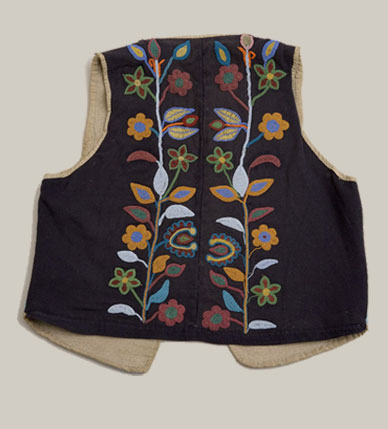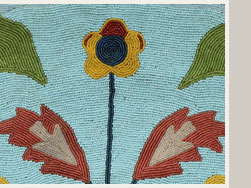Nez Perce traditionally fashioned decorated bags and clothing, and made jewelry from elks teeth, porcupine quills, bone disc beads and bone tubes. Long before the arrival of European traders, the Nez Perce traded for material from as far away as British Columbia, California and the Mississippi Valley.
The first glass beads to reach the Nez Perce came through the trade network which connected Plateau people with their surrounding neighbors. Faceted beads from Russia and China, and Italian round “pony” beads, large “bauble” beads, and many others were added to existing designs for ear rings, necklaces, bracelets and as elements from clothing, and personal objects such as flutes and quirts.
When Lewis and Clark arrived in 1805, they found that the Nez Perce already had glass beads. Beadwork bloomed in the 1840s and 1850s, with a more steady supply of beads. Designs originally rendered in porcupine quill embroidery, rawhide painting, weaving and basketry were adapted as “beadwork” and became a new medium of expression. Floral patterns appeared in the 1860s with the widespread availability of seed beads. By the 1870s the Nez Perce had become famous for their beadwork, both in terms of style and craftsmanship. They used a variety of techniques, including lazy stitch and overlay stitch to create a remarkable array of geometric, floral and pictorial motifs.
Today, bead workers stretch the limits of their medium with creative and modern works, while drawing on the legacy and inspiration of their predecessors.
|




_Belt-Drop.jpg)








